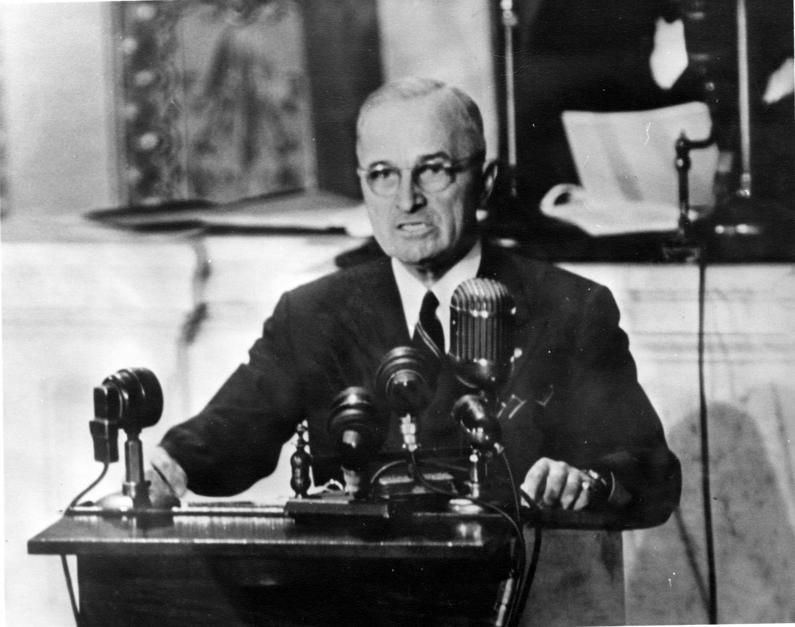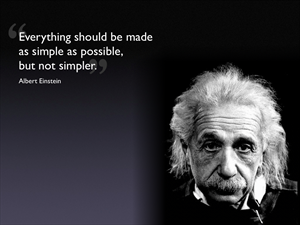Examples of Doctrine
Doctrine surrounds us, yet many people overlook, misunderstand, and malign it. Some ignore doctrine. Others are ignorant of the impact of doctrine. It is no wonder, since most of the business press and many business books focus on strategy and tactics as the primary areas that managers should follow. It is a shame, because failing to embrace the idea of developing a purposeful doctrine just makes the collective task of managing and growing an enterprise harder than it needs to be.
What Do I Mean by a Purposeful Doctrine?
First, I mean establishing a doctrine on purpose, with the intent to create a guiding principle for the way the enterprise operates. A purposeful doctrine is the product of intentional action.
Second, there is a purpose for creating the doctrine. The best example of this is what I sometimes call the constitutional doctrine, better known as the preamble of the US Constitution.
We the People of the United States, in order to form a more perfect Union, establish justice, ensure domestic tranquility, provide for the common defense, promote the general welfare, and secure the blessings of liberty to ourselves and our posterity, do ordain and establish this Constitution for the United States of America.
Break this sentence down into the raw elements and you get to the purpose of the rest of the document. The People of the United States ordain and establish this Constitution to establish Justice, ensure Tranquility, and Secure the Blessings of Liberty.
Think of what the young nation faced at the time of the creation of the Constitution. The country already existed, operating under a set of agreements called the Articles of Confederation. The leaders of the young nation felt a need to replace the Articles because that plan was not working. Consider the language of the preamble of the Articles:
To all to whom these Presents shall come, we the undersigned Delegates of the States affixed to our Names send greeting. Whereas the Delegates of the United States of America in Congress assembled did on the fifteenth day of November in the Year of our Lord One Thousand Seven Hundred and Seventy seven, and in the Second Year of the Independence of America, agree to certain articles of Confederation and perpetual Union between the States of New Hampshire, Massachusetts-bay, Rhode Island and Providence Plantations, Connecticut, New York, New Jersey, Pennsylvania, Delaware, Maryland, Virginia, North Carolina, South Carolina and Georgia, in the words following, viz:
That reads more like a shopping list of places than a statement of purpose.
On Purpose, for a Purpose
Let’s take a look at a number of different historical examples of purposeful doctrines.
Total War
 Total War is where all the resources of a country are employed in the war effort. The American war effort in WWII is a prime example—the civilian population contributed to the war effort through focused effort and sacrifice. Images of Rosie the Riveter, The Liberty Garden, gas rations, War Bonds, and scrap drives all support the Total War Doctrine that the US chose to embrace.
Total War is where all the resources of a country are employed in the war effort. The American war effort in WWII is a prime example—the civilian population contributed to the war effort through focused effort and sacrifice. Images of Rosie the Riveter, The Liberty Garden, gas rations, War Bonds, and scrap drives all support the Total War Doctrine that the US chose to embrace.
While its manufacturing capacity enabled the US to supply war material to the world, making possible our eventual victory, the clear decision by President Roosevelt to make that move is an example of purposeful doctrine—on purpose for a purpose.
At the same time, the British embraced a doctrine of Total War more by necessity than by choice. Under attack by the Germans, British civilians directly felt the impact of Nazi bombing raids. The entire British population focused on the war, and on victory. The British had their backs against the North Sea, and while they engaged in the doctrine for a purpose, they did not really have an option to choose.
The Germans did not adopt a doctrine of Total War until late 1942, as Albert Speer became the Minister of Armaments. Until then, German civilian goods production had remained at prewar levels. Most factories operated single shifts, and almost no women had entered the workforce. Even as Speer increased production, diverting more capacity from civilian to military production, the Third Reich never did adopt a doctrine of Total War.
Don’t Confuse Doctrine With Strategy
 Three different US Civil War Campaigns often come to mind when talking about Total War. W.T. Sherman’s Atlanta Campaign, the March to the Sea, and Philip Sheridan’s Shenandoah Valley Campaigns of 1864 are often thought of as examples of the Total War Doctrine. They are, in fact, examples of a “scorched earth” tactic, in which the strategic goal is to deny the opponent the materials necessary to wage war. This tactic actually dates back to the days of Sun Tzu, who taught that it is better to consume the food and supplies of the enemy while on the move than to carry supplies. The Russians used the scorched earth as a defensive tactic against Napoleon in his march to Moscow in 1812, burning farms and fields ahead of the advancing French.
Three different US Civil War Campaigns often come to mind when talking about Total War. W.T. Sherman’s Atlanta Campaign, the March to the Sea, and Philip Sheridan’s Shenandoah Valley Campaigns of 1864 are often thought of as examples of the Total War Doctrine. They are, in fact, examples of a “scorched earth” tactic, in which the strategic goal is to deny the opponent the materials necessary to wage war. This tactic actually dates back to the days of Sun Tzu, who taught that it is better to consume the food and supplies of the enemy while on the move than to carry supplies. The Russians used the scorched earth as a defensive tactic against Napoleon in his march to Moscow in 1812, burning farms and fields ahead of the advancing French.
Sherman's Atlanta and Georgia campaigns focused on breaking the machine that could support the Confederate army. Tactically, destroying railroads, factories, and cotton barns supported the strategy of removing the Confederate ability to wage war, to support a rapid end to the war.
Monroe Doctrine
In the early years of the United States, the threat of further colonization of the Americas by the European nations of France, Spain, and Portugal posed a threat to the sovereignty of the United States. Introduced in President James Monroe’s seventh State of the Union Address, the Monroe Doctrine is a defining moment in US foreign policy, a doctrine of precedence that other US Presidents subsequently invoked.
Many of the old world colonies in North and South America gained independence as the old monarchies in Europe collapsed. The American government feared that, as a result of the Napoleonic Wars, the old monarchies would reestablish control over their former colonies, threatening the United States.
As an example of a doctrine on purpose for a purpose, consider the introduction of the official policy:
The occasion has been judged proper for asserting, as a principle in which the rights and interests of the United States are involved, that the American continents, by the free and independent condition which they have assumed and maintain, are henceforth not to be considered as subjects for future colonization by any European powers.
The main thrust of Monroe’s doctrine: mess with free and independent American states and we will consider it an act of aggression. At the time, it was bluster; the US lacked a navy or army strong enough to enforce the Doctrine. The Monroe Doctrine depended on the support of the British Royal Navy, which did tacitly support it under Pax Britannia.
Truman Doctrine
 After the fall of Germany in WWII, the uneasy peace between the Americans and their Soviet allies started to unravel as Stalin started to move forces closer to the oil-rich Middle East. Civil war broke out in Greece in 1946. The British provided support for the Greek government for a while, until bankruptcy forced Britain to ask the US to help fund the Greek government. Concerned about the growth of the Soviet sphere of influence, President Harry Truman introduced the Doctrine to Congress on March 12, 1947, in a plea for funds for both Greece and Turkey.
After the fall of Germany in WWII, the uneasy peace between the Americans and their Soviet allies started to unravel as Stalin started to move forces closer to the oil-rich Middle East. Civil war broke out in Greece in 1946. The British provided support for the Greek government for a while, until bankruptcy forced Britain to ask the US to help fund the Greek government. Concerned about the growth of the Soviet sphere of influence, President Harry Truman introduced the Doctrine to Congress on March 12, 1947, in a plea for funds for both Greece and Turkey.
To ensure the peaceful development of nations, free from coercion, the United States has taken a leading part in establishing the United Nations. The United Nations is designed to make possible lasting freedom and independence for all its members. We shall not realize our objectives, however, unless we are willing to help free peoples to maintain their free institutions and their national integrity against aggressive movements that seek to impose upon them totalitarian regimes. This is no more than a frank recognition that totalitarian regimes imposed upon free peoples, by direct or indirect aggression, undermine the foundations of international peace, and hence the security of the United States.
Considered by historians as the start of the Cold War, the Truman Doctrine stated that the United States stood for all free and democratic states, and that the US stood as a shield against totalitarian oppression.
Purposeful on Purpose
I chose each of these historical and geopolitical Doctrines to provide clear examples of how doctrines arise from the conditions of the time, following the Six Steps of Doctrine. My goal is to provide you the reference to learn more about each of these examples, to learn more about the people and the circumstances behind each doctrine. In that study you will be able to see how the Six Steps of Doctrine apply in each example. You will gain a better understanding of each of the steps, and you will learn how to apply those steps in developing your own personal doctrine.
- Through experience
- A group of people develops a set of beliefs
- That they test, prove, modify and understand to be true
- Beyond a shadow of a doubt.
- They codify those beliefs in speech, writing, and demonstration
- To gain leadership approval of an established doctrine.


